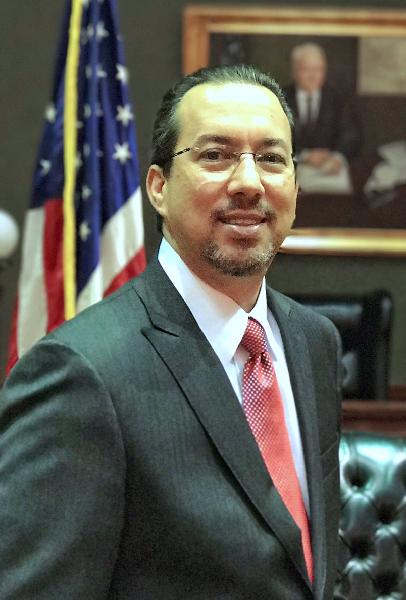BROWNSVILLE — After two years of torrential summer rains that caused disastrous flooding in parts of Cameron County, commissioners believe a legislative fix will allow them to address consistent drainage problems.
The Commissioners Court on Tuesday morning created a new Flood Control District, which will be charged with alleviating drainage problems in Cameron County.
Voters here will be tasked either this November or next May with approving a tax rate to fund the new government entity, which is made up of Commissioner Court members.
“In order for us to get the support to generate the local dollars for flood control projects we’re going to need the approval of the voters,” said Cameron County Judge Eddie Treviño Jr. “We need to be able to tell the voters what they are going to be getting for the levy of a flood control tax, which is why we need as much information on these projects both short-term and long-term.”
The vote on Tuesday essentially shifts the Flood Control District gears into drive. Commissioners have been working on its creation for a 1 ½ years.
On June 24, areas of western Cameron County received 15 inches of rain in four to six hours, a flood event that resulted in 600 rescues, and resulted in 1,130 homes being majorly impacted by flood damage in Cameron, Hidalgo and Willacy counties, a region where drainage does not abide by government boundaries.
This year, the area is eligible for Federal Emergency Management Agency, or FEMA, monies.
Last year, also saw significant flooding that impacted areas of Cameron and Hidalgo counties, causing flood damage in hundreds of homes, but residents were not granted access to FEMA aid.
And it turns out that officials believe that approximately half of Cameron County is not covered by existing drainage districts.
“That’s the impression we’ve been under and we’re trying to confirm,” Treviño said.
One of the first steps for the Flood Control District is to determine what its boundaries are because it cannot include existing drainage and irrigation districts.
“Once we confirm boundaries and limits we’re going to have to find out what we can and can’t do,” Treviño said.
While irrigation districts have nothing to do with drainage, they were included in the legislation that created the Flood Control District.
Treviño said commissioners were caught off guard by this, but expected to be able to resolve the issue through inter-local agreements.
That process will also help commissioners determine the appraised value of properties within those boundaries that can be taxed, which will give them a better idea of what taxable resources are available for short-, mid- and long-term projects.
County staffers will also be reviewing years of drainage studies.
“We don’t want to reinvent the wheel, and analyze what’s already been prepared, which may have a lot of solutions … and figure out a game plan,” he said.
Tuesday’s vote marked the beginning of the long-needed process to address the county’s drainage problems that result in flooded homes and damaged lives, but there’s still a long way to go.
“It’s not a quick fix by any means,” Treviño said.









